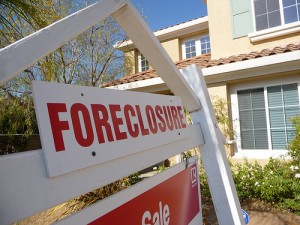
By Michela Zonta
Center for American Progress
The Consumer Financial Protection Bureau (CFPB) has released a much needed and long-anticipated rule—a milestone not only for fair housing policy and advocacy groups, but also for the nation’s growing population of Asian Americans and Pacific Islanders (AAPIs).
The new rule improves the reporting requirements of lenders under the Home Mortgage Disclosure Act (HMDA). Signed into law in in 1975, HMDA was enacted as a response to widespread urban disinvestment and redlining—the systematic exclusion of neighborhoods of color when marketing and offering home mortgage loans. Under the HMDA, mortgage lenders are required to report information about their applicants and loan decisions, including the race and ethnicity of borrowers and people who have been denied. But lenders haven’t had to disclose any data on applicant creditworthiness. As a result, the law has been severely limited in its ability to reveal discriminatory practices.
With the CFPB’s new rule in effect, there will be increased attention paid to the creditworthiness of applicants, including information on their debt-to-income ratios and credit scores—data that are key to uncovering discriminatory lending patterns and determining whether financial institutions are meeting the housing needs of the communities they serve. The new rule also requires more specificity in reporting on the ethnicity and race of applicants—a vital measure to ensure that HMDA data reflect our nation’s increasing diversity.
Prior to this new rule, while HMDA reporting requirements had been useful in shedding some light on mortgage practices in the Black and Latino communities, they have been completely inadequate for capturing the experiences of other communities of color, especially Asian Americans and Pacific Islanders. This is because HMDA data—like numerous other statistics—currently treat AAPIs as a uniform racial group, despite the fact that Asian Americans and Pacific Islanders represent more than 30 countries and ethnic groups that speak more than 100 languages.
The results of data analysis on AAPIs are therefore often misleading. For several years, HMDA data have portrayed the mortgage outcomes of the group as much better than those of other borrowers of color, thus reinforcing the “model minority” myth which asserts that people of color should follow the example of Asian Americans and Pacific Islanders. While it’s true that many hard-working AAPIs have done well in the US—getting a good education and good jobs, becoming homeowners, and building wealth—we also know that this story by no means applies to all AAPIs.
In fact, Asian Americans and Pacific Islanders are not only one of the fastest growing populations in the United States, but also one of the fastest growing populations in poverty since the Great Recession. They come from diverse socioeconomic backgrounds and therefore arrive in the US under widely different circumstances. They have a relatively high median household income compared to African Americans and Latinos, but this is largely due to the fact that AAPIs tend to have larger households and are geographically concentrated in the most expensive states—Hawaii, California, New York and New Jersey.
As a whole, the AAPI poverty rate is 12.6 percent. But if we look at individual groups within the AAPI community, we see just how misleading that figure is. Many individuals and families—especially refugees from Southeast Asia—are among the poorest people in the US. The Hmongs have a poverty rate of nearly 39 percent and Cambodians have a poverty rate of 29 percent—two percentage points above the African American poverty rate. AAPI homeowners were also hit very hard by the housing market crash. Falling housing prices, high rates of foreclosures, and low property values have resulted in a significant loss of wealth in this community. Asian Americans and Pacific Islanders have also endured the largest percentage decline in homeownership rates of any racial group.
Southeast Asians have been particularly vulnerable to foreclosures, as they have higher concentrations of workers in low-wage sectors, lower education levels, and higher rates of linguistic isolation than the broader AAPI community. The Central Valley in California—home to one of the largest concentrations of Southeast Asians—is among the areas that have been most devastated by the foreclosure crisis. Along with the Inland Empire area of Southern California, Central Valley counties feature the highest concentration of foreclosed/Real Estate Owned (REO) properties—and loans at risk of foreclosure—in the state of California. In 2010, the City of Merced had the third worst foreclosure rate in the country at 11 percent. Hmong and Lao comprise 25 percent of the residents in the Merced neighborhoods that were targeted for foreclosure programs.
Like other people of color, many AAPIs still suffer from disparate treatment when looking for housing: one in five AAPIs experience discrimination in the rental and home buying process. Addressing the barriers to housing faced by a diverse AAPI community and others is critical to ensuring that everyone has the opportunity to build wealth for their families—essentially, to achieve the American Dream.
Kudos to the CFPB for taking a powerful step in the right direction.
Michela Zonta is a Senior Policy Analyst for the Housing Finance and Policy team at the Center for American Progress. This story was originally published on TalkProgress.org

